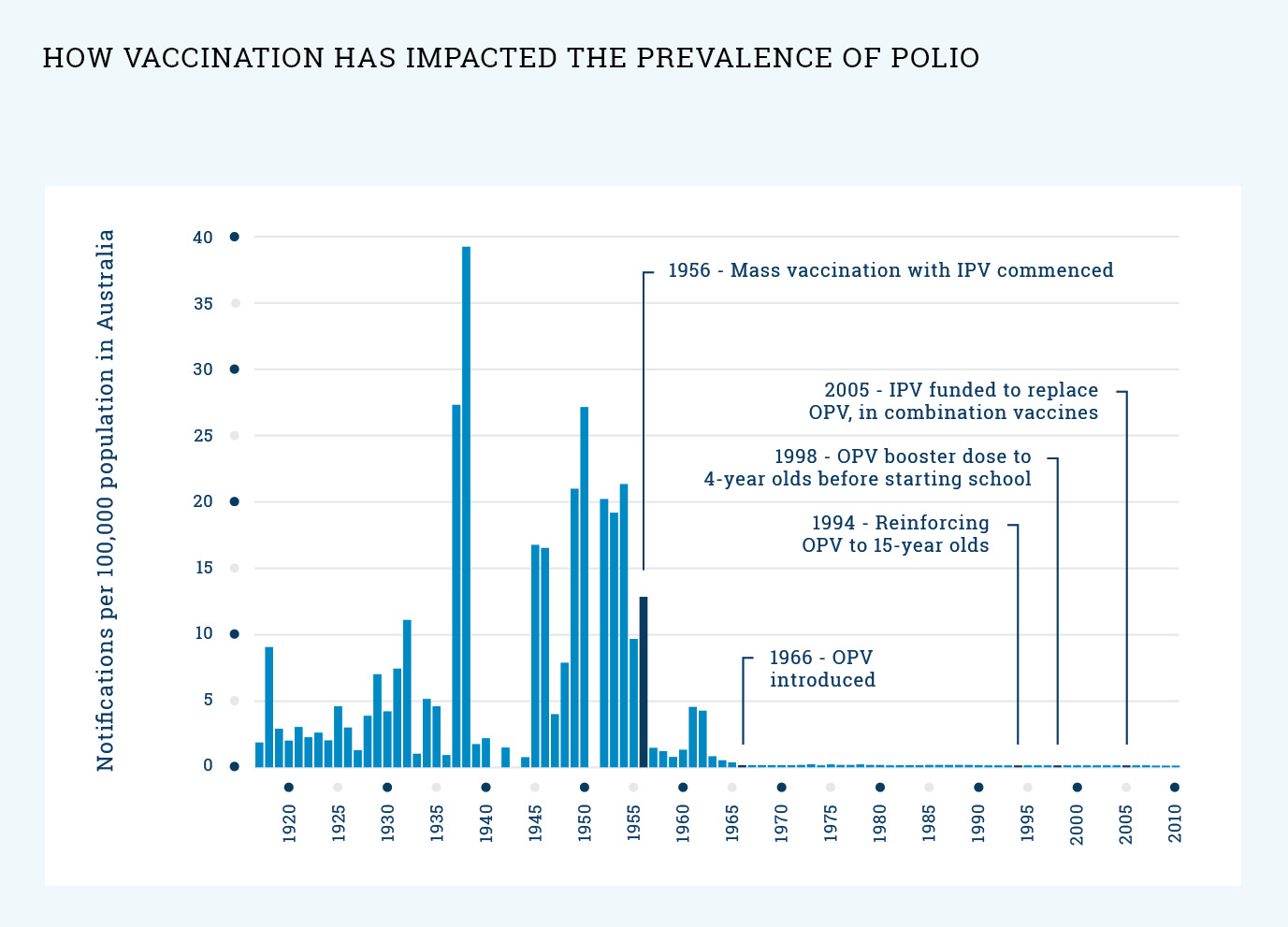Polio
Key facts
-
Polio causes muscle paralysis (loss of movement) in the limbs and can also affect the heart and the muscles that control breathing.
-
In Australia, polio is very rare. Vaccination is recommended so that babies and children can’t catch polio from people around them who have travelled to countries where the disease is still common.
-
Vaccines are the best ways to protect your child from polio.
On this page
- What is polio?
- What will happen to my child if they catch polio?
- What vaccine will protect my child against polio?
- When should my child be vaccinated?
- How does the polio vaccine work?
- How effective is the vaccine?
- Will my child catch polio from the vaccine?
- What are the common reactions to the vaccine?
- Are there any rare and/or serious side effects to the vaccine?
- What impact has the vaccination had on the prevalence of polio?
